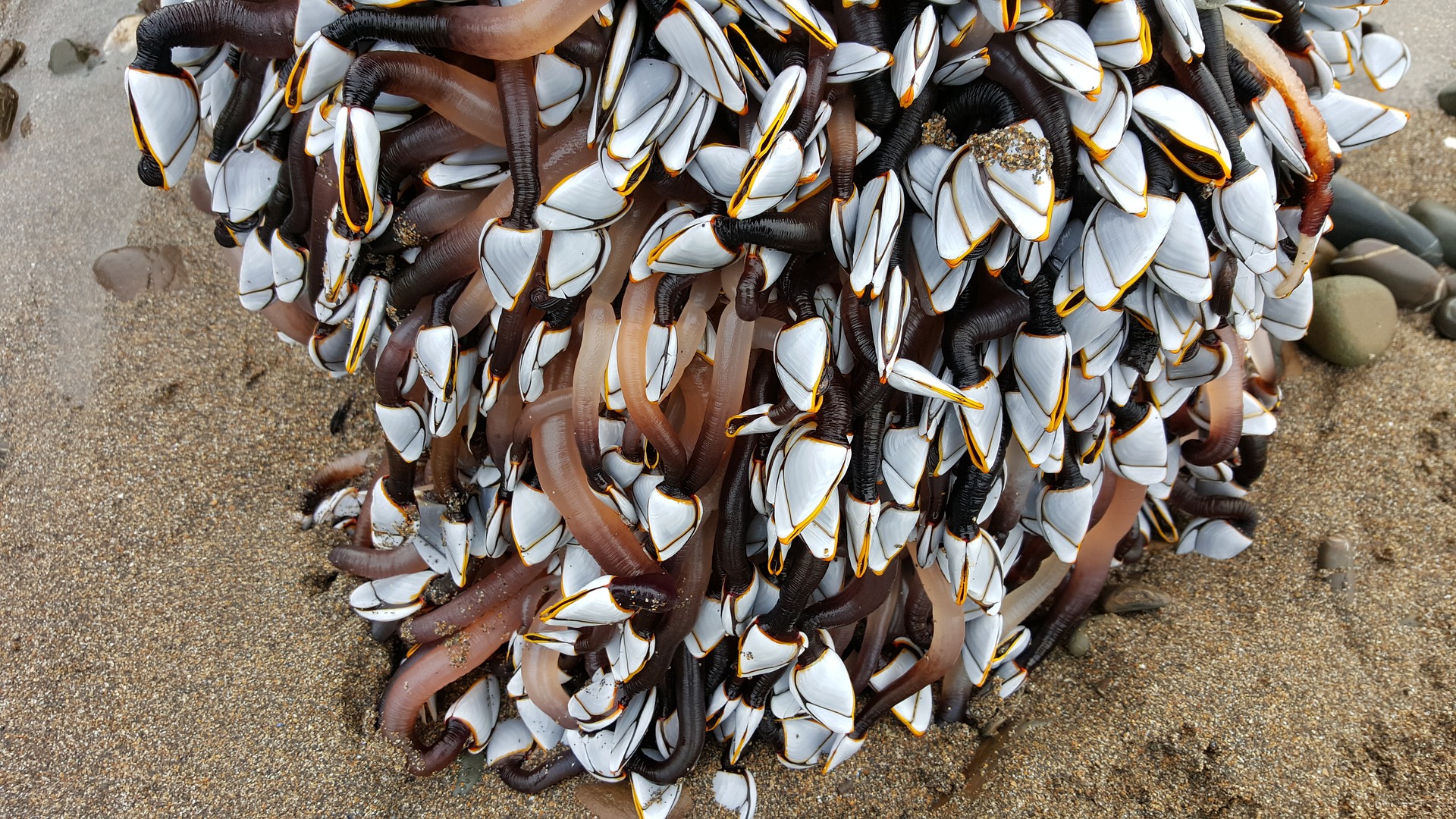Note: This article has been excerpted from a larger work in the public domain and shared here due to its historical value. It may contain outdated ideas and language that do not reflect TOTA’s opinions and beliefs.
From The Topography of Ireland by Giraldus Cambrensis, c. 1188, translated by Thomas Wright.
Chapter XI: Of barnacles, which grow from fir timber, and their nature.
There are likewise here many birds called barnacles, which nature produces in a wonderful manner, out of her ordinary course. They resemble the marsh-geese, but are smaller. Being at first gummy excrescences from pine-beams floating on the waters, and then enclosed in shells to secure their free growth, they hang by their beaks, like seaweeds attached to the timber. Being in the process of time well covered with feathers, they either fall into the water or take their flight in the free air, their nourishment and growth being supplied, while they are bred in this very unaccountable and curious manner, from the juices of the wood in the sea-water.
I have often seen with my own eyes more than a thousand minute embryos of birds of this species on the seashore, hanging from one piece of timber, covered with shells, and already formed. No eggs are laid by these birds after copulation, as is the case with birds in general; the hen never sits on eggs in order to hatch them; in no corner of the world are they seen to pair, or build nests. Hence, in some parts of Ireland, bishops and men of religion make no scruple of eating these birds on fasting days, as not being flesh, because they are not born of flesh...
Chapter XIX: Of wild animals, and their natures.
This island contains nearly all the species of wild animals which are bred in the western countries. It produces stags so fat that they lose their speed, and the more slender they are in shape, the more nobly they carry their heads and branching antlers. In no part of the world are such vast herds of boars and wild pigs to be found; but that are a small, ill-shaped and cowardly breed, no less degenerate in boldness and ferocity than in their growth and shape.
There are a great number of hares, but they are a small breed, much resembling rabbits both in size and the softness of their fur. In short, it will be found that the bodies of all animals, wild beasts, and birds, each in its kind, are smaller here than in other countries; while the men alone retain their full dimensions. It is remarkable in these hares, that, contrary to the usual instincts of that animal, when found by the dogs, they keep to cover like foxes, running in the woods instead of in the open country.
Martins are very plentiful in the woods; in hunting which the day is prolonged through the night be means of fires. For night coming on, a fire is lighted under the tree in which the hunted animal has taken refuge from the dogs, and being kept burning all night, the martin eyeing its brightness from the boughs above, without quitting its post, either is so fascinated by it, or, rather, so much afraid of it, that when morning comes the hunters find him on the same spot.
Giraldus Cambrensis and Thomas Wright, The Historical Works of Giraldus Cambrensis: Containing the Topography of Ireland, and the History of the Conquest of Ireland (London: H.G. Bohn, 1863).
About TOTA
TOTA.world provides cultural information and sharing across the world to help you explore your Family’s Cultural History and create deep connections with the lives and cultures of your ancestors.


